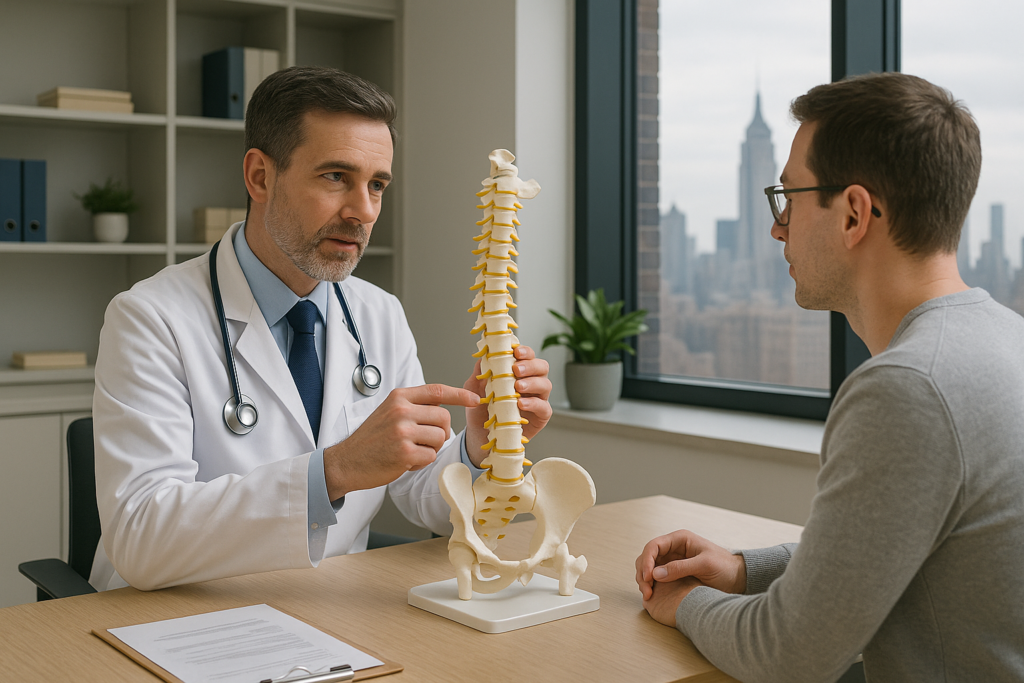
Living with back pain can affect every part of your life, but surgery doesn’t have to mean spinal fusion.
If you’re exploring surgical options in New York City, you’ll be glad to know there are several effective alternatives to traditional spinal fusion.
These alternatives include Discseel®, microdiscectomy, artificial disc replacement, and other minimally invasive procedures that can provide relief while preserving spinal motion.
Many patients worry about losing mobility after spinal surgery. Innovative procedures like Discseel® offer a non-surgical alternative that preserves natural spine function while addressing the root cause of many back problems.
This approach can be particularly beneficial if you’re struggling with back pain but want to maintain your active lifestyle.
NYC offers access to some of the most advanced spine treatment centers in the country.
Specialists like Dr. John Morrison at Morrison Clinic are implementing cutting-edge technologies like Discseel® that are showing improved outcomes for patients who might otherwise need fusion surgery.
Key Takeaways
- Alternative procedures to spinal fusion can provide pain relief while preserving your natural spine movement and flexibility.
- Discseel® offers a minimally invasive option that addresses the underlying cause of many conditions that traditionally required fusion.
- Recovery times for non-fusion alternatives are often shorter than traditional fusion surgeries with potentially fewer long-term complications.
Understanding Spinal Fusion and Its Alternatives
Spinal fusion is a common surgical procedure, but it’s not the only option for treating spine conditions. Several alternatives exist that may offer benefits with fewer limitations.
What Is Spinal Fusion?
Spinal fusion is a surgical technique that permanently connects two or more vertebrae in your spine.
During the procedure, your surgeon places bone or bone-like material between the vertebrae and may use metal plates, screws, or rods to hold the vertebrae together while they heal into one solid unit.
The goal of spinal fusion is to eliminate painful motion between vertebrae by creating a single, solid bone.
This procedure is typically recommended when motion between vertebrae causes pain or when there’s instability in your spine.
There are several types of spinal fusion techniques, including:
- Anterior Cervical Discectomy and Fusion (ACDF)
- Transforaminal Lumbar Interbody Fusion (TLIF)
- Posterior Lumbar Interbody Fusion (PLIF)
- Lateral Lumbar Interbody Fusion (LLIF)
Common Conditions Treated by Spinal Fusion
Spinal fusion is often recommended for several spine conditions when conservative treatments fail to provide relief.
Your doctor might suggest fusion for:
- Degenerative Disc Disease: When discs between vertebrae break down, causing pain and instability.
- Spinal Stenosis: A narrowing of spaces in your spine that puts pressure on nerves.
- Scoliosis: An abnormal curvature of the spine that may worsen over time.
- Degenerative Arthritis: Breakdown of cartilage between spinal joints.
- Disc Herniation: When the soft center of a disc pushes through a crack in the tougher exterior.
- Bone Spurs: Bony projections that develop along bone edges.
Chronic back pain caused by spinal instability may also be treated with fusion, especially when other treatments haven’t helped.
Limitations and Risks of Spinal Fusion
While spinal fusion can be effective, it comes with significant limitations and potential risks you should consider.
- Loss of Mobility: Fusion eliminates motion between fused vertebrae, which can alter your spine’s mechanics and potentially increase stress on adjacent segments.
- Adjacent Segment Disease: Increased stress on vertebrae above and below the fusion can accelerate degeneration at these levels.
- Recovery Time: Full recovery can take 6-12 months, with activity restrictions during healing.
- Surgical Risks: These include infection, bleeding, nerve damage, blood clots, and hardware failure.
- Pain Relief Uncertainty: Not all patients experience complete pain relief after fusion.
Because of these limitations, many patients now consider alternatives like Discseel®, which addresses disc issues without fusion, or artificial disc replacement, which preserves motion.
Leading Alternatives to Spinal Fusion in NYC
New York City offers several advanced options for patients seeking alternatives to traditional spinal fusion.
These approaches often provide faster recovery times and better mobility while still effectively treating spinal conditions.
Discseel® Procedure
Discseel® has emerged as one of the most promising alternatives to spinal fusion in NYC.
Unlike fusion, which permanently joins vertebrae together, Discseel® addresses the underlying cause of many spine problems—damaged discs—while preserving natural spine function.
This innovative procedure uses a natural fibrin biologic sealant to seal tears in the disc’s outer layer (annulus), which are often the root cause of conditions that lead to fusion recommendations.
The outpatient procedure:
- Takes approximately one hour to complete
- Requires only tiny incisions
- Preserves natural spine motion
- Allows damaged discs to heal and potentially regenerate
- Addresses both pain and the underlying structural problems
Dr. John Morrison at Morrison Clinic is among NYC’s leading providers of this groundbreaking alternative to fusion.
Many patients with degenerative disc disease, disc herniations, and even some cases of spinal instability may be candidates for this procedure.
The Discseel® advantage over fusion includes:
- No hardware implantation
- Preservation of natural spine biomechanics
- Significantly shorter recovery time
- Reduced risk of adjacent segment disease
- Option for future treatments if needed (doesn’t “burn bridges”)
Artificial Disc Replacement
Artificial disc replacement (ADR) has also become an important alternative to spinal fusion in NYC.
This procedure replaces damaged intervertebral discs with artificial ones that mimic natural disc function.
Unlike fusion, ADR preserves motion at the treated level.
This can reduce stress on adjacent segments of your spine, potentially preventing future problems.
Many advantages of ADR over conventional fusion include:
- Faster recovery times after surgery
- More spinal mobility after surgery
- Reduced stress on adjacent vertebrae
You may be a good candidate for ADR if you have single-level disc disease and haven’t responded to conservative treatments.
Several NYC spine specialists offer this advanced procedure using the latest implant technology.
Minimally Invasive Spine Surgery
Minimally invasive spine surgery (MISS) offers another excellent alternative to traditional fusion procedures.
These techniques use smaller incisions and specialized instruments to access and treat spinal problems.
During MISS, surgeons utilize muscle dilation rather than cutting through tissues. This approach significantly reduces trauma to surrounding structures.
Key benefits you’ll experience with MISS include:
- Smaller incisions (often less than an inch)
- Less blood loss during surgery
- Reduced muscle damage
- Shorter hospital stays
- Quicker return to normal activities
MISS can address various spine conditions including herniated discs, spinal stenosis, and some cases of spinal instability. Many NYC spine practices now offer these techniques as their standard approach when appropriate.
Physical Therapy and Rehabilitation
For many patients with back pain, non-surgical approaches should be the first line of treatment before considering any surgery. Physical therapy and rehabilitation programs in NYC provide comprehensive, evidence-based treatment options.
These programs typically include:
- Customized exercise regimens to strengthen core muscles
- Manual therapy techniques to improve mobility
- Posture and body mechanics training
- Pain management strategies
Your physical therapist will create a personalized plan addressing your specific condition. They’ll focus on improving spine stability, flexibility, and function while reducing pain.
Many NYC rehabilitation centers offer specialized equipment and techniques not available elsewhere. These might include aquatic therapy, specialized traction systems, and advanced biofeedback tools to optimize your recovery.
Evaluating Candidates for Alternative Treatments
Not everyone is a suitable candidate for alternatives to spinal fusion. Proper evaluation involves comprehensive imaging, careful assessment of medical history, and consideration of individual patient factors that might affect outcomes.
Diagnostic Procedures and Imaging
The evaluation process typically begins with advanced imaging to accurately diagnose your spinal condition. Magnetic resonance imaging (MRI) is essential as it provides detailed views of soft tissues including nerves, discs, and spinal cord compression. This helps doctors determine if Discseel® or disc replacement might be appropriate for your condition.
X-rays are used to evaluate bone alignment, stability, and the presence of arthritis. These images are particularly important to assess spinal motion and structural integrity.
In some cases, your doctor might recommend discography – a procedure where contrast dye is injected into spinal discs to identify which ones are causing pain. This can be valuable when MRI findings don’t clearly correlate with your symptoms.
For Discseel® evaluation specifically, specialists look for evidence of annular tears on MRI. These tears, which allow disc material to escape and irritate nerves, are precisely what the procedure targets.
Assessing Patient Suitability
Your overall health status significantly impacts your eligibility for non-fusion alternatives. Doctors will evaluate your:
- Age and activity level
- Pain patterns and severity
- Previous spine treatments and surgeries
- Bone quality and density
- Overall health conditions
Ideal candidates for procedures like Discseel® typically have:
- Pain primarily from disc pathology
- Confirmed annular tears
- No significant spinal deformity
- No severe arthritis in facet joints
- Good bone quality
Dr. Morrison carefully evaluates each patient to determine the most appropriate alternative to fusion. While traditional fusion may sometimes be necessary, many patients who previously would have required fusion can now benefit from less invasive options like Discseel®.
Considerations for Special Patient Populations
If you’re in certain patient populations, such as those with obesity, your evaluation requires additional considerations. Excess weight places increased stress on the spine, which can affect both surgical outcomes and long-term success of non-fusion alternatives.
For patients with significant obesity and severe back pain, a multidisciplinary approach is often best. This might include weight management programs alongside physical therapy and pain management before making surgical decisions.
Non-fusion procedures may still be possible depending on your specific condition and the surgeon’s assessment of risks versus benefits in your particular case. Discseel® often represents a viable option for patients who might not be ideal candidates for more invasive procedures.
Comparing Recovery and Patient Outcomes
Recovery experiences vary significantly between spinal fusion and alternative procedures. Key factors include hospital stay duration, blood loss risk, and time needed to return to normal activities after surgery.
Recovery Timeline and Hospital Stay
After traditional spinal fusion, patients typically spend 2-4 days in the hospital. Alternative procedures often reduce this stay considerably.
The Discseel® procedure generally involves:
- Outpatient treatment (no overnight hospital stay)
- Return to light activities within days
- Progressive improvement over weeks to months
- No hardware-related complications
Most patients who undergo Discseel® can resume driving and return to desk work within one week of the procedure. This is significantly faster than traditional fusion techniques, which can require months of restricted activity.
Patients who undergo disc replacement also experience a faster recovery than fusion patients, with many able to return to normal activities within 3-6 weeks.
Recovery timelines depend on:
- The specific procedure performed
- Your overall health before treatment
- Whether complications occur
- Your adherence to post-operative instructions
Risks and Complications Comparison
Traditional spinal fusion typically involves greater risks during surgery compared to newer alternatives. Fusion procedures generally result in:
- More blood loss
- Higher infection rates
- Hardware-related complications
- Adjacent segment disease over time
Discseel® has shown a significantly lower complication profile with:
- Minimal bleeding
- Lower infection risk due to smaller incisions
- No hardware-related issues
- Preservation of natural spinal biomechanics
Leading-edge non-fusion technologies at NYC spine centers are delivering improved patient outcomes with fewer complications. When considering your options, ask your specialist about:
- Specific complication rates for each procedure
- Blood loss expectations
- Post-procedural pain management approaches
- Rehabilitation requirements
Frequently Asked Questions
Patients considering spine surgery in NYC often have important questions about alternatives to traditional fusion procedures. These questions cover everything from new technologies to costs and eligibility criteria.
What are the latest non-fusion alternatives to traditional spinal fusion techniques?
Several innovative non-fusion alternatives have emerged in recent years. Discseel® offers a minimally invasive approach that addresses disc tears without fusion or hardware implantation.
Artificial disc replacement has become increasingly popular, allowing for preservation of motion at the treated segment unlike fusion which eliminates movement.
Percutaneous endoscopic discectomy uses tiny incisions and specialized tools to address disc problems while minimizing tissue damage.
Laminectomy without fusion can effectively treat spinal stenosis while maintaining spinal flexibility in appropriate cases.
How do Discseel® and artificial disc replacement compare as alternatives to fusion?
Discseel® addresses the underlying cause of many disc-related problems by sealing tears and allowing natural healing. It doesn’t involve implanting hardware and preserves the disc’s natural structure.
Artificial disc replacement replaces the damaged disc with a mechanical device that mimics disc function. While it preserves motion, it does require implanting artificial hardware.
Both approaches maintain spinal mobility better than fusion, though they address different aspects of disc pathology. Your specialist can help determine which approach better suits your specific condition.
How can patients determine their eligibility for alternatives to spinal fusion?
Your spine specialist will evaluate your medical history, current symptoms, and lifestyle factors. Detailed imaging studies including MRIs and potentially discography help determine if your specific condition can benefit from alternatives rather than fusion.
The location and extent of your disc damage matters greatly. Discseel® works best for confirmed annular tears, while disc replacement is typically most appropriate for single-level disc disease without significant facet joint arthritis.
Your age and overall health will factor into eligibility considerations, with each procedure having specific indications and contraindications based on your unique situation.
What are the average costs associated with non-fusion procedures?
In NYC, costs for non-fusion procedures vary widely depending on the specific treatment, facility, and provider. Insurance coverage also varies significantly, with many plans now covering alternatives to fusion when medically necessary.
Patients should verify coverage details and potential out-of-pocket costs beforehand. Many practices, including Morrison Clinic, provide insurance verification services to help determine coverage for specific procedures.
When comparing costs, it’s important to consider not just the initial procedure expense but also factors like recovery time, return to work, and potential need for future interventions.
Experience the Freedom of Movement: Choose NYC’s Leading Non-Fusion Spine Specialists
If you’re facing the prospect of spinal fusion surgery in New York City, know that you have options. Innovative alternatives like Discseel® and other minimally invasive procedures can address your pain while preserving the natural function of your spine. Dr. John Morrison at Morrison Clinic offers comprehensive evaluations to determine which approach best suits your unique condition, providing personalized care that focuses on both immediate relief and long-term spinal health.
Don’t let back pain limit your life or commit to fusion surgery without exploring all your options. Contact Morrison Clinic today to schedule your consultation with NYC’s spine specialists. Discover if Discseel® or other fusion alternatives could help you return to an active, pain-free lifestyle without the limitations of traditional fusion surgery.





